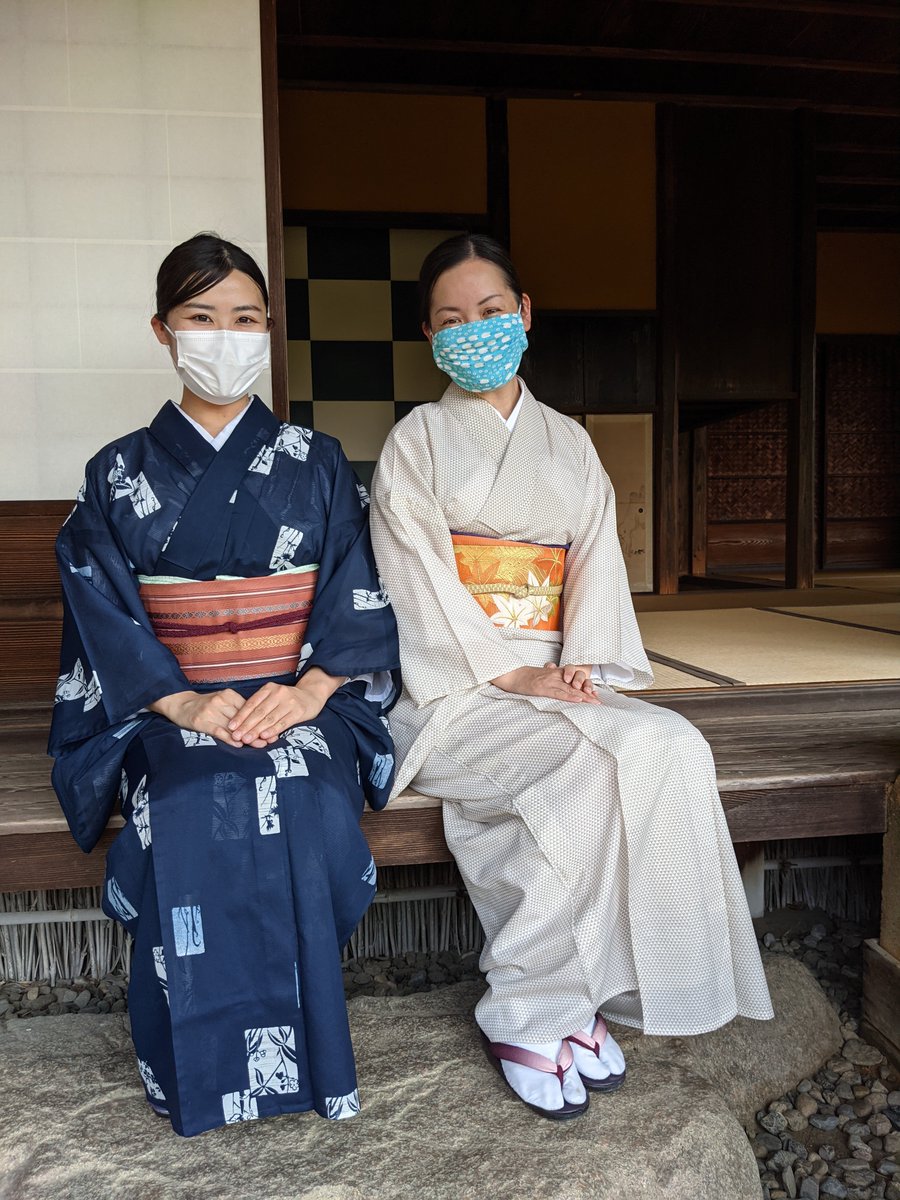
🎑🚣GENJI'S RETREAT🌝🍵
'Far away, in the country village of Katsura, the reflection of the moon upon the water is clear and tranquil.'
It was this line from Murasaki Shikibu's 'The Tale of Genji' (源氏物語) that inspired Prince Hachijō Toshihito to create Katsura Rikyū.
#Japan



'Far away, in the country village of Katsura, the reflection of the moon upon the water is clear and tranquil.'
It was this line from Murasaki Shikibu's 'The Tale of Genji' (源氏物語) that inspired Prince Hachijō Toshihito to create Katsura Rikyū.
#Japan




Beginning as little more than 'a teahouse in the melon patch', Prince Hachijō Toshihito (八条宮 智仁親王 1579–1629) and his son poured what wealth they had into building Katsura Detached Villa (桂離宮), recreating the aesthetics of the Heian period and 'The Tale of Genji'.
#Kyoto



#Kyoto




Katsura Rikyū (桂離宮) stands on the west bank of the Katsura-gawa, sprawling over 70,000 square metres.
Since ancient times this area has been considered the perfect moon-viewing spot, and in the Heian period 'rustic' villas of the aristocracy were constructed beside the river.



Since ancient times this area has been considered the perfect moon-viewing spot, and in the Heian period 'rustic' villas of the aristocracy were constructed beside the river.




The garden was created by the 1st, 2nd & 3rd heads of the Hachijō-no-miya family: princes Toshihito (智仁親王), Toshitada (智忠親王 d.1662) & Yasuhito (智忠親王 d.1665).
Even before it was fully complete the garden was considered a masterpiece, Japan’s finest pond-stroll garden.



Even before it was fully complete the garden was considered a masterpiece, Japan’s finest pond-stroll garden.




When originally constructed it would take guests half a day to travel from the imperial palace to the detached villa.
Astonishingly the buildings have never been touched by fire and so the sprawling gardens, palace and teahouses remain unchanged since their creation.
#Japan #京都



Astonishingly the buildings have never been touched by fire and so the sprawling gardens, palace and teahouses remain unchanged since their creation.
#Japan #京都




Prince Toshihito (智仁親王) was the younger brother of Emperor Go-Yōzei (後陽成天皇).
Coming into possession of land beside the Katsura-gawa in the early 17thC, the original villa 'Ko-shoin' (古書院) & garden was finished by 1615.
After his death it quickly fell into disrepair.



Coming into possession of land beside the Katsura-gawa in the early 17thC, the original villa 'Ko-shoin' (古書院) & garden was finished by 1615.
After his death it quickly fell into disrepair.




Like his father (Toshihito), Prince Toshitada (智忠親王) adored art and literature, but for decades he lacked the financial resources to continue his father's work.
Then came his marriage to Fuhime (富姫), daughter of the wealthy Maeda Toshitsune (前田利常 Daimyō of Kaga Domain).
Then came his marriage to Fuhime (富姫), daughter of the wealthy Maeda Toshitsune (前田利常 Daimyō of Kaga Domain).
The Katsura Rikyū (桂離宮) we know today is mostly thanks to Toshitada. By 1649 he had expanded the pond & gardens, and constructed the Chū-shoin (中書院), Shin-goten (新御殿), Geppa-rō (月波楼), Shōkin-tei (松琴亭), Shōka-tei (賞花亭) and Shōi-ken (笑意軒).
#桂離宮 #京都 #Kyoto



#桂離宮 #京都 #Kyoto




4 of the original 5 teahouses remain...1 for each of the 4 seasons.
Spring- Shōka-tei '賞花亭) 'Flower-Appreciation Pavilion'
Summer- Shōi-ken (笑意軒) 'Laughing Thoughts Pavilion'
Autumn- Geppa-rō (月波楼) 'Moon-wave Tower'
Winter- Shōkin-tei (松琴亭) 'Pine-Lute Pavilion'



Spring- Shōka-tei '賞花亭) 'Flower-Appreciation Pavilion'
Summer- Shōi-ken (笑意軒) 'Laughing Thoughts Pavilion'
Autumn- Geppa-rō (月波楼) 'Moon-wave Tower'
Winter- Shōkin-tei (松琴亭) 'Pine-Lute Pavilion'




Katsura village was a popular retreat during the summer for aristocrats escaping the city heat. River-boating and melon-viewing were popular pastimes, and in the autumn people flocked to see the full moon. Katsura trees (桂), connected to the moon god, grew in profusion here.
Hikaru Genji frequently escaped to Katsura, and in the real world Fujiwara-no-Michinaga constructed a grand villa called Katsura Sansō (桂山荘).
Territorial rights belonged to the Konoe family until 1617, when Shōgun Hidetada (徳川秀忠) passed ownership to the Hachijō-no-miya.



Territorial rights belonged to the Konoe family until 1617, when Shōgun Hidetada (徳川秀忠) passed ownership to the Hachijō-no-miya.




The Hachijō-no-miya (八条宮), refashioned as the Kyōgoku-no-miya (京極宮) & then the Katsura-no-miya (桂宮), ended with the 11th head Princess Sumiko (淑子内親王) in 1881.
In 1964, 7,000 sq.m of farmland was bought in order to preserve the villa's scenic beauty in its entirely.



In 1964, 7,000 sq.m of farmland was bought in order to preserve the villa's scenic beauty in its entirely.




• • •
Missing some Tweet in this thread? You can try to
force a refresh







































































